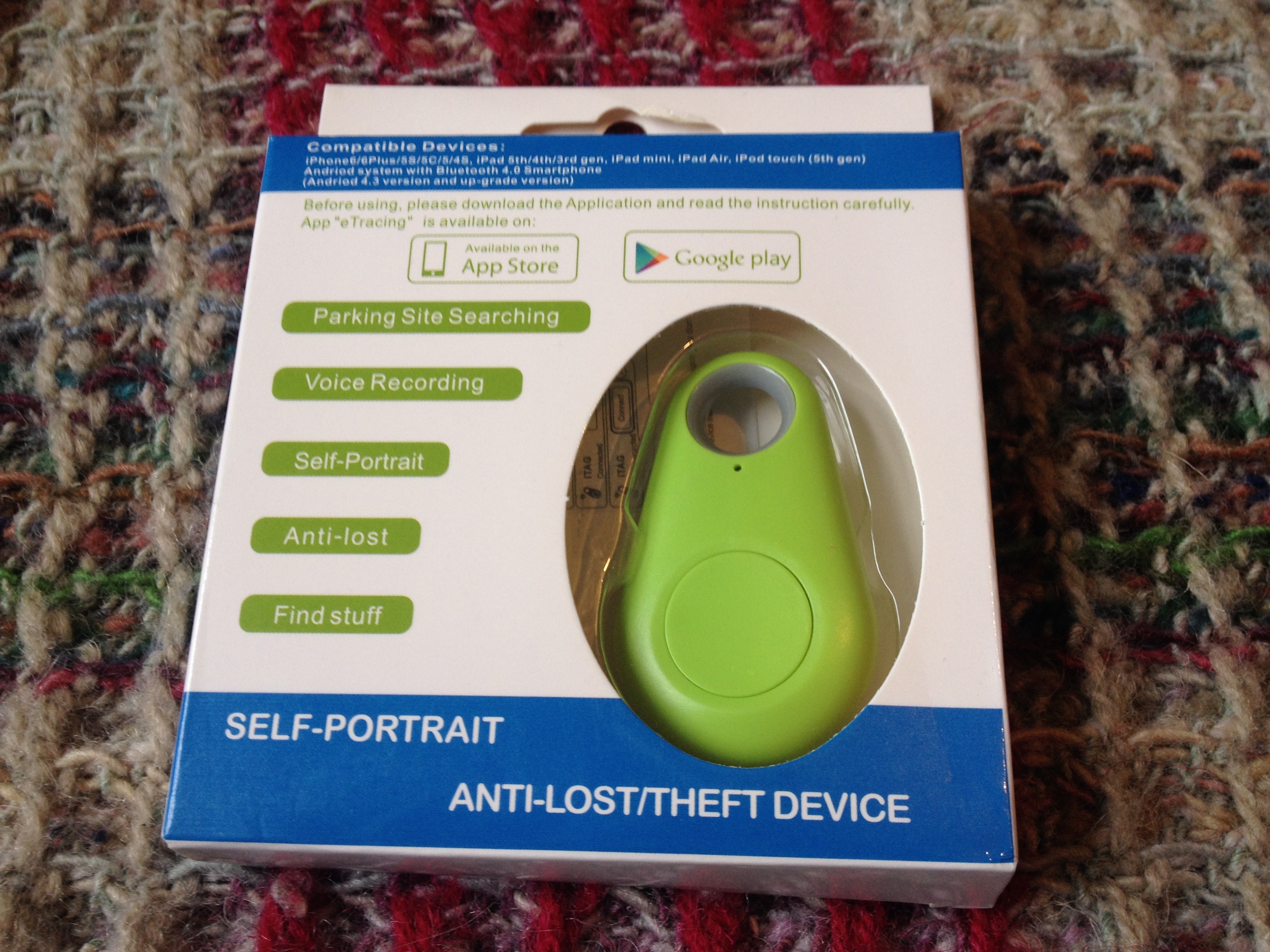A cheap BTLE button with Android
Thanks to the marvellous @fiverfun I have a few Bluetooth LE buttons at £3 a pop. I'm not sure what I want to do with them yet, but well, £3 each, who could resist?

They took a month to come and arrived just before Christmas, and I persuaded Richard to install the app (iTracing) on his phone via the QR code on the instructions, but it (a) didn't work and (b) when I tried it later on my phone, kept turning the sound on and making a horrible siren noise. I uninstalled it.
Fortunately Sylvek has already had the patience and enthusiasm to work out the protocol these buttons use and made available an Open Source app that does actually work with them. The rest of this post is some quick instructions on how to compile an Android app on the command line, and install it via adb via Mac OS X (I have a Wileyfox Storm running Cyanogen). I'd never done it before, and it was pretty easy (I had Java and adb installed already).
Check you have Java
java -version
Download gradle
curl -O https://services.gradle.org/distributions/gradle-2.10-all.zip unzip gradle-2.10-all.zip cd gradle-2.10
Get the tools (this part took a while)
cd android-sdk-macosx tools/android update sdk --no-ui
fix this issue with gradle-2.10
git clone https://github.com/sylvek/itracing2 cd itracing2
Tell Gradle where things are
export PATH=$PATH:/Users/libbym/android_button/gradle-2.10/bin export ANDROID_HOME=/Users/libbym/Development/android-sdk-macosx
Do whatever it is that Gradle does
gradle assembleDebug
Find the output
ls app/build/outputs/apk/ > app-debug-unaligned.apk app-debug.apk
Install on a connected device (you need to enable developer mode: 7 taps on the Settings>About phone>Build number field and then enable USB debugging: Settings>Developer Options>USB Debugging. Make sure you have a USB data cable. For my Wileyfox I had to add 0x2970 to ~/.android/adb_usb.ini to trigger it to authorise the laptop.) Then:
adb install app/build/outputs/apk/app-debug.apk
Done!
Helpful links:
- itracing2 which I found via this issue
- Sideload Android apps via adb
- Building and running Android apps from the command-line
- Gradle download and installation
- Gradle issue with 2.10